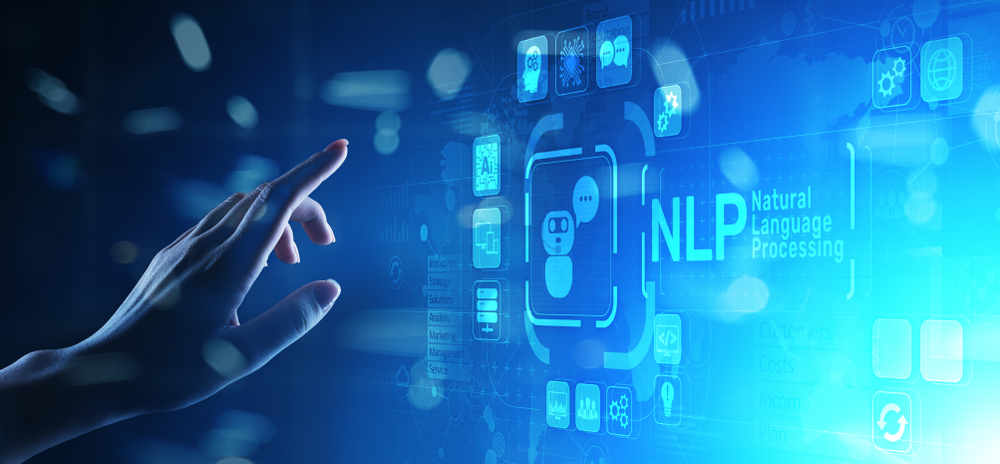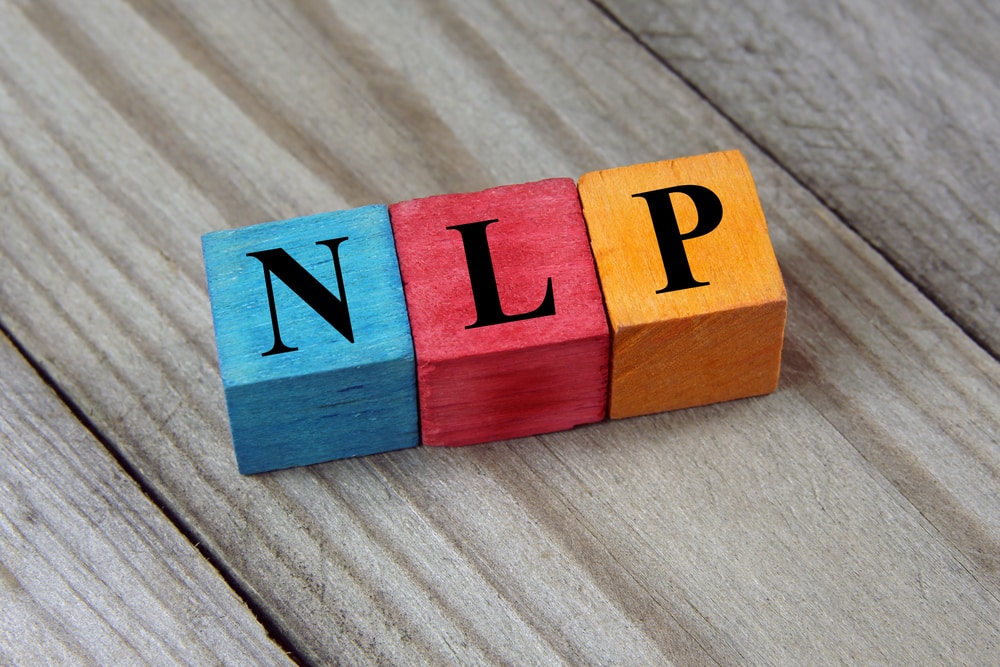The term Natural Language Processing (NLP) refers to the field of artificial intelligence that is concerned with the interactions between computers and human (natural) languages.
Natural Language Processing (NLP) enables computers to process and analyse vast amounts of text and speech data, providing computers with the ability to interact with human beings in a more natural and intelligent manner. It utilises computational linguistics and machine learning approaches to comprehend and generate meaningful responses from text and speech.
With the evolving modes of communication, resulting in the generation of excessive text data every day, the need for Natural Language Processing is becoming more crucial than ever.
As a crucial branch of AI, natural language processing (NLP) is responsible for analysing unstructured data, understanding complex writings, and providing actionable insights, and it is already changing industries such as healthcare, finance, and e-commerce.
NLP in Artificial Intelligence
Without natural language processing, which enables machines to understand and process human language exceptionally well, the full potential of artificial intelligence would not have been reached.
Traditional computer programs rely on structured data inputs. Still, natural language processing in AI makes it possible for systems to interpret and analyze unstructured data, like emails, social media posts, and voice commands.
NLP in AI has evolved significantly, leading to the development of intelligent assistants, language translation applications, and more sophisticated text-processing applications.
NLP, one of the most significant uses of AI, is what leads the ability of computers to understand human language, to things like image classification, machine translation, and automated summarisation (braindumps 1011-047 pdf).
NLP ML algorithms, on the other hand, are trained on massive datasets to identify patterns within text and predict meanings (and therefore automate tasks that previously required human effort), creating a path for businesses to achieve deeper insights and more efficiency within their industries.
Advance your AI career with the Great Learning AI and Machine Learning Program. Master NLP, deep learning, and ML to boost your expertise.
Process of NLP
NLP, short for Natural Language Processing, is a series of steps that help turn unstructured inputs (like text or speech) into structured and actionable insights. The basic steps of NLP are:

- Tokenization: Tokenization is simply separating the text into smaller units known as tokens. A token can be a word, a phrase, or a sentence. This step is critical to understanding the mathematical representation of tokenized data, as the above is not applicable without research, as it refers to NLP ML models.
- Text Normalization: Text normalization is the process of converting text into a standard format. It contains processes like lowercasing, stemming, and lemmatization.
Stemming (i.e., Running — Assumed to be word root: run) and lemmatization (i.e. — Running — Word root: RUN).
Text Normalization transforms text into a more consistent and canonical form, which can improve the performance of various natural languages processing tasks, such as text classification, sentiment analysis, and machine translation. - Stopword Removal: Stopwords are words that are very frequently used, like ”the,” “is,” and “in.” 0 || (remove them to reduce noise and increase the efficiency of NLP models, especially in text activity.
- Part-of-Speech (POS) Tagging: POS tagging, or part-of-speech tagging, is the process for labelling a work based on its grammatical category, for example, whether it is a noun, verb, adjective, or adverb. This is useful for learning the syntax of a sentence and is an important part of natural language processing applications such as grammar correctors and chatbots.
- Entity Recognition (NER): NER recognizes mentioned names, dates, locations, organizations, etc., in the text. It is commonly applied in performing tasks like information extraction, sentiment analysis, and automated customer support systems.
- Analysis of Parsers and Syntax: Parsing helps to analyze the structure of the sentence and understand the relationship between the words. This, in turn, aids in text processing for applications such as sentence disambiguation, grammar checking, and text analysis, making it a baseline process in NLP machine learning applications.
- Semantic Analysis: This under-the-hood work is called semantic analysis, which determines the context in which words and sentences make sense. For a better understanding of sentiment, intent, and context present in the text, enabling better performance of NLP-based machine learning models for real-world applications, this step is important.
NLP, Machine Learning and Deep Learning Techniques
Machine learning techniques are an essential part of modern NLP APIS. NLP used to build models based on rules, but the introduction of NLP machine learning allowed us to create models that learn patterns from huge datasets.
- Supervised Learning in NLP: Train your models on labelled datasets. In NLP applications, algorithms like Support Vector Machines (SVM), Naïve Bayes, and Decision Trees are used for text classification and sentiment analysis.
- Unsupervised Learning in NLP: Unsupervised learning is applied when labelled data is not available. Clustering and topic modelling (Latent Dirichlet allocation) techniques are used to find hidden structures in text data and to help NLP in applications of artificial intelligence, such as market research and automated document summarization.
- Deep Learning in NLP: The development of better models, such as recurrent neural networks (RNNs), transformers, and convolutional neural networks (CNNs), has further advanced NLP and improved precision.
BERT (Bidirectional Encoder Representations from Transformers) and GPT (Generative Pre-trained Transformer) models have transformed NLP use cases by enabling machines to understand and produce text like humans.
These deep learning models find a variety of applications in natural language processing use cases, such as voice assistants, content creation, and on-demand translation.
The Uses of Natural Language Processing
Natural language processing is making its presence felt in different sectors. Here are some example uses of natural language processing:
- Virtual assistants and chatbots: NLP also powers voice assistants such as Siri, Google Assistant, and Alexa, allowing them to understand spoken language and respond accordingly. Data preprocessing was one of the popular text processing techniques to get the best output in customer service chatbots.
- Sentiment Analysis: By analyzing customer feedback on social media & review platforms, NLP helps businesses. With the help of NLP models, sentiment analysis helps organizations and institutions assess how the public is responding to their goods or services.
- Machine Translation: For example, Google Translate uses NLP in AI to translate one language to another without changing the meaning and context of the text.
- Text Summarization: NLP is used by news agencies and research organizations to produce short summaries of long articles, making information consumption more straightforward. This is a good example of how natural language processing makes text processing easier.
- Speech Recognition: Speech-to-text systems that leverage NLP to convert spoken words into written text, improving accessibility features in applications.
- Automated Resume Screening: Human resource (HR) departments can use NLP-powered tools to scan resumes, making it easier to sift through dozens of potential hires and find talents that meet specific skills and qualifications before they reach the interview stage.
How do you Learn Natural Language Processing (NLP)?
To start with, you must have a sound knowledge of programming languages like Python, Keras, NumPy, and more. You should also learn the basics of cleaning text data, manual tokenization, and NLTK tokenization.
The next step in the process is picking up the bag-of-words model (with Scikit learn, keras) and more. Understand how the word embedding distribution works and learn how to develop it from scratch using Python. Embedding is an important part of NLP, and embedding layers helps you encode your text properly. After you have picked up embedding, it’s time to learn text classification, followed by dataset review. And you are good to go!
Great Learning offers a Free Deep Learning Certificate Program that covers all the major areas of NLP, including Recurrent Neural Networks, Common NLP techniques – Bag of words, POS tagging, tokenization, stop words, Sentiment analysis, Machine translation, Long-short term memory (LSTM), and Word embedding – word2vec, GloVe.
Available Open-Source software to learn in the NLP Domain:
- NLTK
- Stanford toolkit
- Gensim
- Open NLP
What is lemmatization in NLP?
Lemmatization is a methodical way of converting all the grammatical/inflected forms of the word’s root. Lemmatization uses the context and POS tag to determine the inflected form(shortened version) of the word and various normalization rules are applied for each POS tag to get the root word (lemma).
A few questions to ponder about would be:
- What is the difference between Stemming and lemmatization?
- What would the rules be for a rule-based stemmer for your native language?
- Would it be more straightforward or challenging to do so?
Applications of Natural Language Processing Across Different Sectors
NLP is revolutionising various industries by streamlining and automating numerous workflows. The same core applications of natural language processing are:
- Healthcare: Natural language processing helps healthcare professionals extract information from patient records, automate medical transcription, and make disease diagnosis more efficient through predictive analysis.
- Finance: In finance, NLP is used in AI for purposes including fraud detection, customer support, and algorithmic trading based on sentiment analysis of news about the market.
- E-commerce: For online shopping platforms, NLP improves personalized suggestions, customer service, and feedback balance.
- Legal Industry: For example, law firms use NLP to automate tasks such as contract analysis, legal document classification, and case law research.
- Education: From personalized learning to automated grading and language learning applications, NLP models have actively been supporting education through AI-driven NLP tools.
Natural Language Processing is The Future
Advancements in AI and machine learning are paving the way for more advanced and sophisticated models, filling a bright future for NLP. Various technical breakthroughs focus on tasks such as enhancing language comprehension, creating real-time translation, and developing conversational AI.









